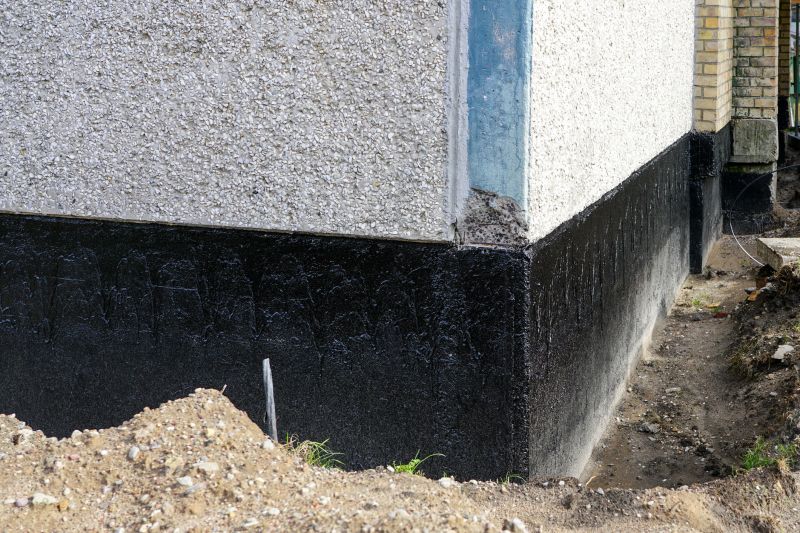Top Waterproofing Products for Effective Moisture Protection
Discover the leading waterproofing solutions designed to safeguard your property from water damage and ensure durability.
 Waterproofing products are essential for protecting structures, foundations, and surfaces from water intrusion and damage. They come in various forms, each designed to address specific needs such as sealing cracks, creating barriers, or treating surfaces to repel water. Proper selection and application of waterproofing materials can help prevent issues like mold, rot, and structural deterioration, especially in areas prone to moisture exposure.
Waterproofing products are essential for protecting structures, foundations, and surfaces from water intrusion and damage. They come in various forms, each designed to address specific needs such as sealing cracks, creating barriers, or treating surfaces to repel water. Proper selection and application of waterproofing materials can help prevent issues like mold, rot, and structural deterioration, especially in areas prone to moisture exposure.
Top Overall Option
Comprehensive Waterproofing Sealant
A versatile and durable waterproofing sealant designed for multiple surfaces including concrete, brick, and wood. It provides a flexible, long-lasting barrier against water infiltration, making it suitable for both interior and exterior applications. Easy to apply with various tools, it adheres well and maintains its protective qualities over time.
Types of Products For Waterproofings
Liquid Waterproofing Membranes
Flexible liquid membranes that can be rolled or brushed onto surfaces to create a seamless waterproof barrier.
Bituminous Coatings
Asphalt-based coatings ideal for foundations, roofs, and underground structures, offering good adhesion and water resistance.
Polyurethane Sealants
High-performance sealants suitable for joints and cracks, providing elasticity and strong water resistance.
Cementitious Waterproof Coatings
Ready-mixed coatings that are easy to apply, often used on basement walls and concrete surfaces.
Rubberized Waterproofing Sheets
Pre-formed sheets that are adhered to surfaces to provide a durable waterproof layer, often used in roofing.
Spray-On Waterproof Coatings
Aerosol or pump spray coatings that quickly form a waterproof barrier on various surfaces.
Waterproof Paints
Specialized paints designed to repel water and protect surfaces from moisture penetration.
Waterproofing Collars and Flanges
Accessories used to seal around pipes, vents, and other penetrations to prevent leaks.
Hydrophobic Surface Treatments
Chemical treatments that make surfaces water-repellent by creating a protective coating.
Crack Injection Systems
Specialized systems used to fill and seal cracks in concrete to prevent water infiltration.
Waterproofing Fabrics and Meshes
Reinforcing materials used in conjunction with liquid membranes for added durability.
Drainage Boards
Protective layers that facilitate water drainage away from foundations and walls.
Waterproofing Tape
Self-adhesive tapes used to seal joints, seams, and small cracks.
Epoxy Waterproof Coatings
High-strength coatings suitable for areas exposed to chemicals and water pressure.
Foam Sealants
Expanding foam products that fill gaps and prevent water entry.
Sheet Membranes
Pre-formed sheets made of rubber or plastic for waterproofing large surfaces.
Polymer Modified Cement
Enhanced cement mixes with polymer additives for improved waterproofing properties.
Waterproofing Additives for Concrete
Chemical admixtures added to concrete to improve its water resistance.
Popular Choices
Widely used for their versatility and ease of application across various surfaces.
Commonly selected for foundation and roof waterproofing due to their durability.
Popular for sealing joints, cracks, and expansion areas in buildings.
Favored for basement walls and concrete structures for their straightforward application.
Chosen for quick coverage and convenience, especially in large or irregular areas.
Often used for surface treatments on walls, floors, and roofs to provide an additional moisture barrier.
Effective for sealing seams and small cracks in various construction projects.
Commonly installed behind walls and beneath slabs to redirect water away from structures.
Preferred for areas requiring high chemical and water resistance.
Useful for repairing existing cracks and preventing further water intrusion.
Popular in roofing and foundation waterproofing for their reliability and ease of installation.
Increasingly used to make surfaces water-repellent with minimal surface alteration.
Frequently used around plumbing and electrical penetrations for effective sealing.
Different environments and surfaces require different waterproofing solutions. For example, basements and foundations often benefit from sealants and membranes that can withstand hydrostatic pressure, while roofs may require flexible coatings or membranes that accommodate movement. Interior applications, such as bathroom tiles or shower stalls, often use waterproof paints or membranes to create a moisture-resistant barrier.
Choosing the right waterproofing product involves considering factors like the surface material, exposure conditions, and longevity requirements. Some products are designed for temporary fixes, while others provide long-term protection. Proper surface preparation, application techniques, and adherence to manufacturer guidelines are crucial for achieving optimal results. Regular inspections and maintenance can also extend the effectiveness of waterproofing solutions.
Investing in quality waterproofing products can help safeguard your property from water-related issues, preserving its value and structural integrity. Whether you are working on a small DIY project or a large-scale construction, understanding the options available ensures you select the most appropriate solutions for your specific needs.
Key Buying Considerations
- Compatibility with the surface material to ensure proper adhesion and effectiveness.
- Type of waterproofing needed, such as liquid membrane, coating, or sheet system.
- Exposure conditions including moisture levels, hydrostatic pressure, and UV exposure.
- Ease of application, including tools required and surface preparation needs.
- Durability and lifespan of the product under expected environmental conditions.
- Flexibility of the material to accommodate surface movement and settling.
- Compatibility with existing waterproofing layers or other building materials.
- Application thickness and coverage rate to meet project requirements.
- Curing time and drying conditions to plan installation schedules.
- Cost considerations balanced with quality and longevity.
- Resistance to chemicals, salts, or other environmental factors if relevant.
- Manufacturer reputation and product reviews for reliability.
- Availability of technical support and detailed instructions.
- Compliance with local building codes and standards.
- Maintenance requirements for ongoing performance.
